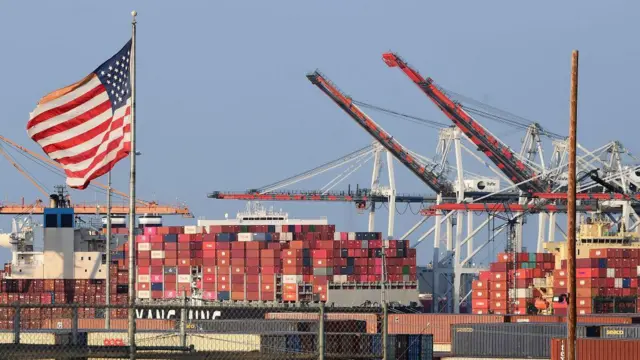
Trump’s Re-Election is set to reshape U.S. Container Trade dynamics
NEW YORK : With Donald Trump’s return to the White House anticipated, the U.S. container trading industry faces a new landscape of both opportunity and complexity. As his administration seems almost certain, policy shifts such as increased tariffs, tighter trade regulations, and economic stimulus measures are likely to reshape the market. While these changes could elevate demand and bring optimism among container traders, they also introduce challenges, from inflationary pressures on imports to potential supply constraints in domestic containers. Container xChange CEO Christian Roeloffs provides insights on how these anticipated changes may impact container traders, offering a strategic outlook on navigating the evolving U.S. container market.
“Trump’s re-election could present substantial opportunities for container traders in the U.S. On the domestic front, it’s likely to boost confidence in the economy among our customers (container trades), driving both demand and optimism. However, the impact of higher tariffs is twofold. While we’ll see inflationary pressure on import prices, volumes may stay stable or even increase, depending on how companies respond to new tariffs and counter- tariffs.” shared Christian Roeloffs, cofounder and CEO of Container xChange, an online global marketplace for container trading and leasing.
“With increased tariffs and stricter trade regulations likely on the horizon, the supply of domestic containers in the U.S. may tighten as the cost of imports rises. This could impact container availability, potentially making used containers more valuable on the secondary market as traders seek affordable options.”
“Meanwhile, we’re seeing indications of increased domestic demand. Expected fiscal measures to stimulate the U.S. economy may boost demand for used containers within the U.S., as businesses look to capitalize on growth opportunities. However, there are clouds on the horizon, particularly around inflation, which could impact container prices and operational costs. Additionally, any reduction in expected Fed rate cuts may place additional pressure on financing and expansion within the container trade.”
“Overall, while there’s optimism for higher container demand, the evolving policy landscape may introduce volatility and increase costs, particularly as traders adapt to the impact of new tariffs and potential trade barriers.”
Globally, we can expect pronounced trade disruptions as tariffs come into play. While these may restructure trade routes and lead to circumvention tactics, they often translate to increased demand for container shipping.
“These disruptions tend to make trade routes less efficient—when tariffs force companies to avoid direct routes, such as redirecting goods from China through Mexico before reaching the U.S., additional stops increase the number of TEUs and extend the distance traveled to reach the same destination. This not only lengthens transit times but also consumes more fuel, raising demand for both containers and shipping capacity.”
“In essence, these disruptions, despite potential challenges, can have a positive impact on container rates and industry demand. We anticipate that the coming years under Trump’s administration will continue to reshape global trade routes, likely elevating container demand and prices. These shifts in trade dynamics could ultimately favor the container industry by creating a sustained demand for shipping and new capacity.”
Source : Container Xchange
